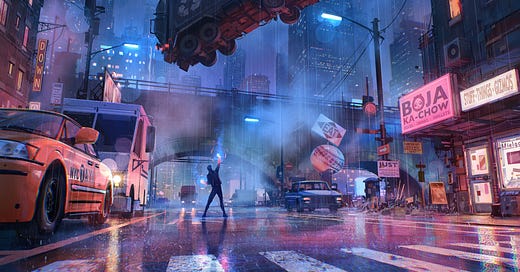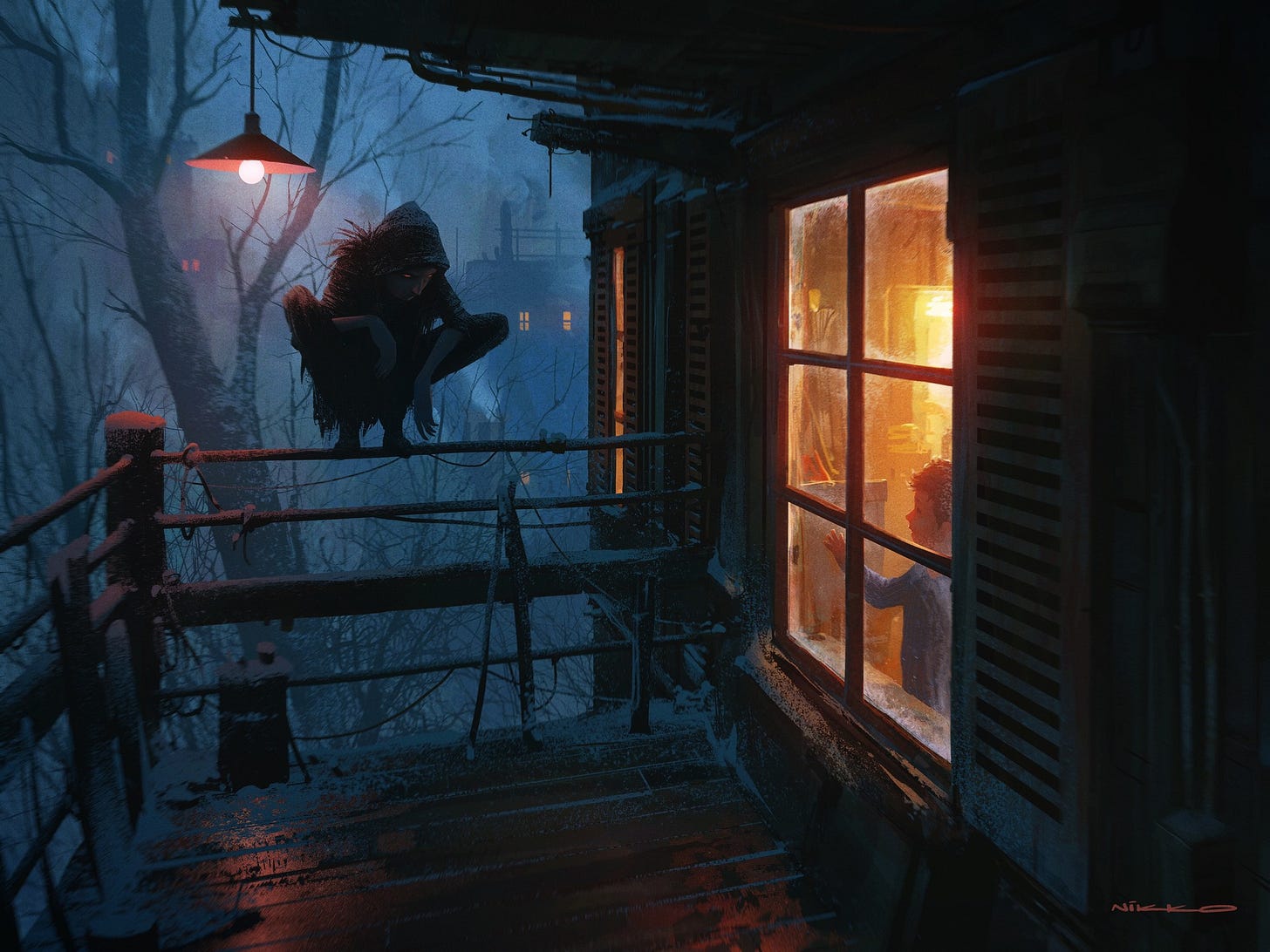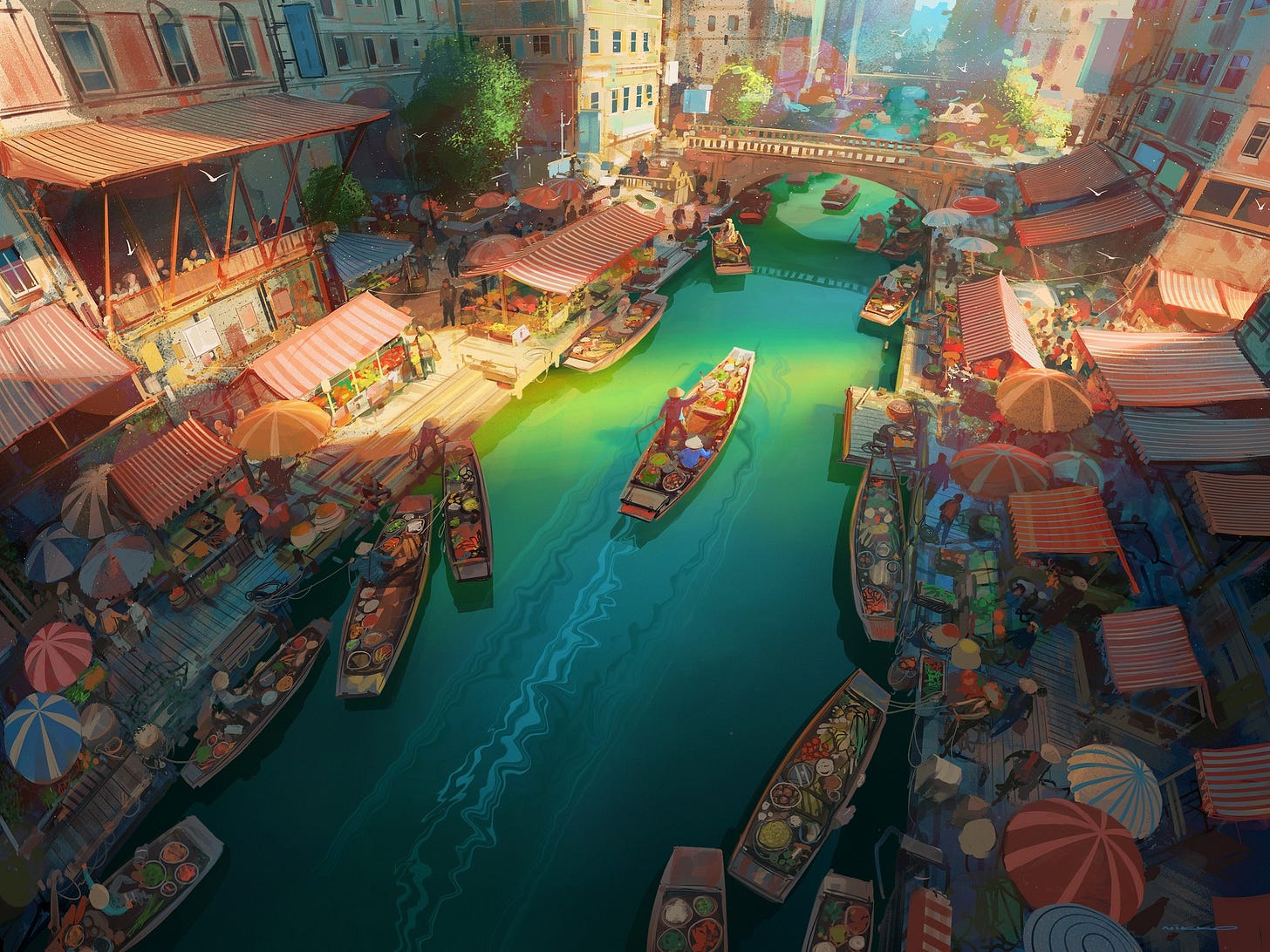Nikolai Lockertsen: An Innovator
A first for many things this artist helped shape 3D films in Norway then became a pioneer for iPad and Procreate art.
What's your background, and what are you working on?
My father was in the film industry and I ended up falling in love with film. In the late 90s I started working as a runner on a film set and a few years later I applied to an animation studio but I was only doing pencil and pen art so jobs kept asking me if I knew photoshop or illustrator.
I went out and learned those but tried to get hired again companies were saying “yea we see you know photoshop and illustrator but do you know 3D?” and I was like come on I don’t know any 3D! After I learned 3D I applied to work on the first 3D CGI movie in Norway.
They turned me down as well but told me to enroll in a computer animation masterclass in Germany. Originally I wanted to get another job outside of art and forget about everything but something told me I had to try this. I took the half year in Germany and ended up meeting my wife there too!
After that I spent half a year making a short film in 3D to prove to the studio that I could do the job and that became my ticket in. I really fell for 3D once I got the job. It’s incredible how you can make a whole world out of nothing and breath life into things that don’t exist.
What are the biggest challenges you've faced and obstacles you've overcome?
I was asked to do concept art for the movie Passengers with Chris Pratt. It’s set 600 years into the future and they wanted me to do a spaceship design in six days. The directors showed me artwork from Oblivion, fully finished concept art and said it had to match that level.
I was like cool can it look like… NO! It can’t look like anything you’ve seen before. I tried explaining that you have to hang designs on some existing visual language and they were like… no no nothing you’ve ever seen before. I had no idea what to make at first and it became such a monumental task. If you can’t be inspired by something it’s almost impossible to start.
How do you keep the joy of creating while working professionally?
It’s really important to make your own artwork. I didn’t really think about this when I started because I could work around the clock for clients but after I became a father my spare time became so precious. Working late nights for others became difficult but the urge to draw was still there.
I think it’s really important to develop yourself also. The more I develop the more I see the distance between my art and that of the best. It’s like getting to know a language and realizing the complexity of learning it perfectly.
I also try to push my boundaries. I have my own style but I like to go to the extremes whether that means realistic or cartoony. I try to learn and experiment with everything and that makes it easy to hire me because I can wear so many hats.
I usually do urban city scenes so once I finish something like that I’ll do a portrait or a nature piece. I don’t like to be pinned down to one thing so learning and experimenting is key. My wife is also an artist too so we can both sit down and draw on our iPads together and we’re lucky art is something we both love.
What motivated you to get started with your art?
When I was a kid art was my one little superpower. I was teased a lot with my thick glasses, curly hair and standout teeth so I had to have something I was good at.
When I started showing talent with drawing it started to snowball because people would praise me for my art and I would want to spend more time working on it. I was fairly young when I realized I wanted to make art my career and I ended up becoming a concept artist, illustrator and animator.
In Norway the 3D and CGI scene was just starting and I’m glad I was lucky enough to help shape and evolve it. I ended up working for Storm Studios on one of the first 3D movies in the country from 2001 to 2005, then went back and fourth between freelancing and working with them until 2014. At that point I felt I had to change my work-situation and have been freelancing since and I love it.
From 2012 onward my inner artist was trying to break out and thats when I started working on the iPad which was such a productivity boost for me. I commuted 2 hours everyday and before that I was doing watercolor on the bus, I had a full system for it but was already falling in love with digital. It’s much more natural for me to work with it because I could paint like I was building a scene in 3D.
I was probably one of the first in Norway to get an iPad in 2010 and I discovered Procreate in 2011. In the beginning there was a limit on resolution and Procreate didn’t even go to 1k but the app had so much potential, you could make your own brushes and they had a lot of good features already. I was burning to give my input so I emailed the CEO James Cuda and he responded 2 hours later!
We started emailing back and forth and he ended up becoming one of my really good friends, I’ve been hanging out with him and the awesome Procreate-team in Australia. They made me a beta tester for Procreate so they give me all of the new updates first so I can give them feedback and crush bugs. It always feels like Christmas when a new Procreate build comes out.
How have you gotten your art noticed?
The last few years people have been contacting me from Art Station, which is a really good channel to find new customers. When I went freelance again in 2014 I had already worked with a lot of companies, so I had a strong network built up and not many people in Norway did what I did.
Eventually I started getting more customers around the world and went to different events like Lightbox or workshops in London. I’ve done demos and held talks before because I completely fell in love with Procreate and wanted everyone to know about it.
The team at Apple kind of gave me a platform too. When the iPad pro came out they flew me to London and I had my iPad pro three days before it was released in 2015. I was well known with the Procreate guys and they wanted me to do an interview with some big papers over there about my expirence with the iPad pro and new Apple Pencil.
I made my own art tutorials and was asked to teach here and there for different companies as well. The architecture company that designed Apple Park has their own concept art team and asked me to teach them for a week which was a great opportunity.
I really got noticed because I pioneered the iPad art thing. Not many people can say they started working professionally on an iPad in 2012. Theres a ton of good photoshop people making tutorials but for awhile I was one of the few procreate guys so it was easy to get noticed.
What are your goals for the future?
Last year was a big year for me because of Lightbox, an art event in Pasadena with about 6000 attendees and 800 artists. Procreate was the main sponsor and they unveiled Procreate 5 with one of the main new features being animation.
I used to work as an animator but only 3D and I really missed it so they asked me if I wanted to do a little animation for them. I was just so YES!! I hadn’t done 2D animation but I knew the principals and it just felt like coming home when I started doing animation on Procreate. That’s something I really want to spend more time doing.
Another app I love is Luma Fusion. It’s an editing app for movies but it has six layers of videos so you can do a lot of animation techniques on it like you can in After Effects. Combine that with procreate and your iPad becomes an animation studio.
I’m keen on doing more animation but it takes a lot of time. With a painting I can have the end result in a few hours and do something quick after the kids go to sleep but with animation I end up spending a couple of weeks just to have something finished.
Have you found anything particularly helpful or advantageous in your art career?
Just having the iPad and Procreate is very helpful. The iPad is expensive but the quality is great and Procreate is only ten dollars, its really an amazing painting suit. Hardware and software for artists is so accessible now.
Discovering other artists was a huge help as well. Frank Frazetta was probably the first one I picked up on and maybe Craig Mullens a bit after. Syd Mead is like the godfather of concept art and did Blade Runner which was a very futuristic style and a big influence.
One other favorite is Sergey Kolesov. He’s a fantastic concept artist and character designer. He’s like me but much better and does a lot of videos on youtube. I could be 45 minutes into a video and have no idea what he’s drawing until something happens and your like oh my god thats what he’s been drawing the whole time! With mine you can kind of see what I’m doing in ten minutes.
Another favorite is Alberto Mielgo. He set the whole visual language for Spiderman: Into the Spider-Verse. He worked on that for a year and a half before anyone else came on so he had a huge influence. His style is so iconic and he’s a photoshop guy but draws with selections and not brushes. He could do all of his work with a mouse if he wanted to. His style is very clean but also pushes into super realism with out doing it traditionally.
He’s into details and design but also composition and framing. He knows the rules but breaks them all the time so he’s really a master. His film in the Netflix series “Love Death and Robots” is called The Witness and you can really connect the dots between Spider-Verse and this film. Visually it’s stunning. He also just did a trailer for the new Watchdogs game and the style is very Alberto Mielgo.
What's your advice for artists who are just starting out?
Keep drawing and draw every day. It doesn’t need to be for long but at least thirty minutes. Draw both from reference and imagination because for imagination you need a library of shapes, designs and visual language which gets built up by drawing from reference. Try to do characters and environments, exteriors and interiors, all of the seasons, just spread out as much as you can.
You should also try to mimic other artists, copy their style. Not their art just their style. Try drawing references at different angles, learn perspective and anatomy in depth. There are some artists that are really into one thing but I wouldn’t start like that. I try to throw my net as big as possible and that eventually boils down into the things you love.
I’m so glad I did visual effects, 3D and animation. Those skills gave me such a great foundation for my own artwork and when I work at a studio I know exactly what they need. You just understand the whole pipeline so experiment a lot and find what you like the most.
Where can we go to learn more about your art?
You can see my ArtStation here, thats the one thats the most updated and I have all the videos and 2D artwork posted. On Youtube and Instagram I have some time lapses and tutorials plus the animations I did for Procreate. My tutorials on Schoolism and Gumroad are very helpful also. Go check them out!
Want to learn more about professional artists?
Subscribe to Art Insights and find out where your passion can take you. Every week we interview new artists to find out how they built their platforms and found success. Instagram: @art.insights






